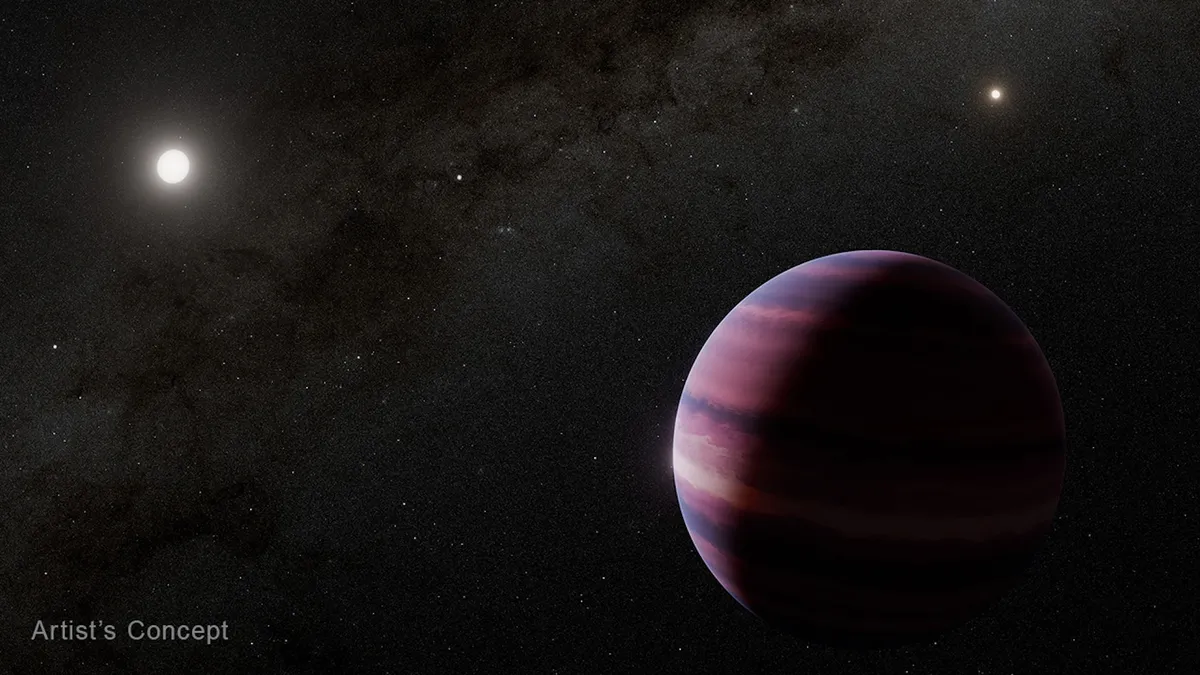
There might be a huge planet lurking near one of the closest stars to Earth, sparking excitement among astronomers and space enthusiasts alike. NASA's James Webb Space Telescope (JWST) has captured images of a potential planet located near Alpha Centauri A, a sun-like star that is part of the Alpha Centauri star system. This stellar trio is only four light-years away from our planet, making it a prime area for astronomers to explore and learn about distant star systems.
However, there's a twist to this cosmic tale. JWST only detected the supposed Saturn-sized planet once, back in August 2024. Subsequent attempts to observe the planet in 2025 yielded no results, leading study co-lead author Aniket Sanghi, a doctoral student at Caltech, to describe the situation as a “disappearing planet.” Despite this setback, the research team remains optimistic about the planet's existence.
The scientists hypothesize that the planet may have shifted in its orbit, moving into the star's glare, which could explain why it was not visible during the later observations. Stanimir Metchev, Canada Research Chair in Extrasolar Planets at Western University in Ontario, stated in an email to Live Science that this explanation is plausible. Metchev, who was not directly involved in the research, emphasized that follow-up observations in 2026 or 2027 will be crucial for confirming the planet's existence.
If confirmed, this planet would represent the most significant discovery made by the JWST to date. It would be the closest world to Earth located in the habitable zone of a star, where conditions may allow for the existence of liquid water on a rocky surface similar to Earth. Although the newly identified Saturn-size exoplanet is likely too large to support life as we know it, its proximity and characteristics place it at the forefront of astronomical research.
Furthermore, this would be the closest planet to its star ever imaged directly, as it orbits at twice the distance between Earth and the Sun. However, confirming this finding is not straightforward. The signal detected is at the limit of what contrast-enhancement techniques applied to JWST images can achieve. Metchev noted that while the analysis conducted by the authors is thorough and credible, any direct image of an exoplanet, especially one of such potential significance, will require further verification.
The Alpha Centauri system comprises three stars: the sun-like stars Alpha Centauri A and Alpha Centauri B, alongside a dimmer red dwarf known as Proxima Centauri. Notably, astronomers have already confirmed the existence of three planets orbiting Proxima Centauri, highlighting the system's richness in celestial bodies. For the observations, JWST employed its Mid-Infrared Instrument (MIRI), necessitating a custom observing sequence to effectively hunt for planets in the Alpha Centauri system.
To enhance its ability to detect fainter planets, JWST utilized a coronagraphic mask to block the intense light emitted by Alpha Centauri A. This innovative approach allowed the telescope to capture images of planets that would otherwise be obscured. Study lead co-author Charles Beichman, executive director of the NASA Exoplanet Science Institute at Caltech, expressed pride in the team's achievement, noting the extreme difficulty of such observations due to the brightness and rapid movement of these stars.
Looking ahead, the research team has hinted at more planet-hunting endeavors. The next closest sun-like star, Tau Ceti, located approximately 12 light-years from Earth, is expected to present even greater challenges for astronomers, even with the capabilities of the JWST. Additionally, NASA's Nancy Grace Roman Space Telescope, set to launch as early as May 2027, will further aid in the search for new worlds, expanding our understanding of the universe.